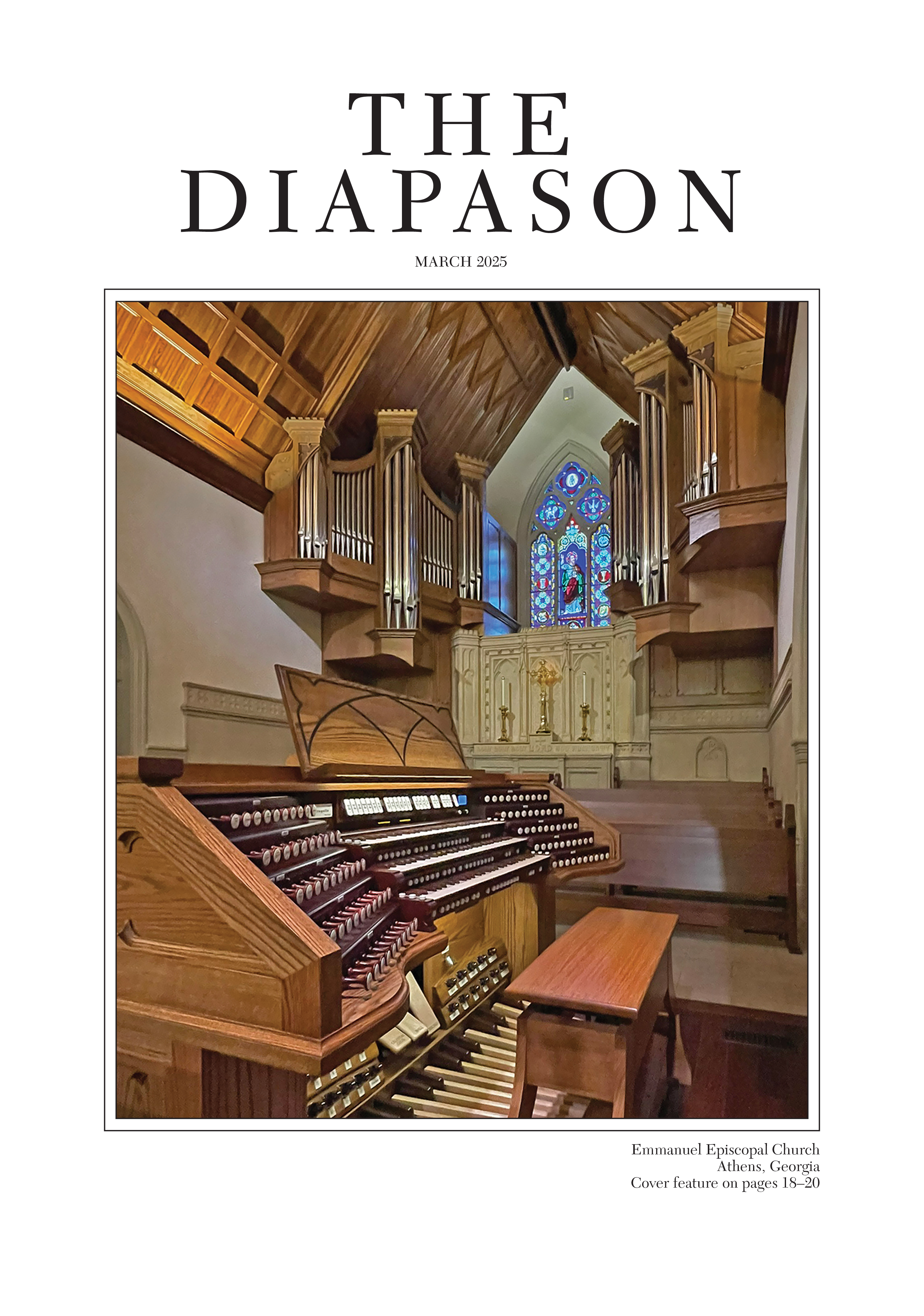Marceau Pipe Organ Builders, Inc., Seattle, Washington
The Episcopal Church of the Incarnation,
Great Falls, Montana

Marceau Pipe Organbuilders of Seattle, Washington, has completed a major project to the M.P. Möller pipe organ at this historic Great Falls church. The original instrument was installed in 1949, as Möller’s Opus 7821, in two expressive chambers. The Great and Choir were located in the right chamber, the Swell and Pedal in the left chamber. The tonal design was typical of the period, with a bold-sounding Diapason chorus on the Great, a rather timid-sounding Choir, and a Swell that provided the most successful variety of chorus and solo stops. Since the organ lacked for visual character, it was decided that this detail would be explored to determine what could be done. A number of design options were presented, and the choice by the organ committee was a more classically designed case that would blend with the architecture of the nave.
The grillework of the chancel openings was removed to incorporate the twin cases of the Great. Given the shallow depth of these spaces, a modest four-stop Great was realized. The façades contain pipes from the Great 8′ Principal and 4′ Octave. The right case contains interior pipes of the 4′ Octave and Mixture; the left case contains the interior pipes of the 8′ Principal and 8′ Open Flute. The right chamber was repurposed to become the enclosed Choir. The existing Great windchest became the added Choir windchest, thus allowing for a complete flute chorus (including independent mutations) and two Gemshorns to complement the Swell strings. The Swell Trumpet was relocated to this chamber and installed on unit windchests. This change made it possible to provide much-needed duplexing (extended to the 16′ Posaune in the Pedal) for this very versatile stop. The Swell 8′ Oboe was located in place of the 8′ Trumpet.
The tonal transition was profound. The original Diapason chorus, aggressive and colorless, was replaced with brighter, more transparent sounds, including the Mixture. The Choir became a stand-alone division that not only provides added color but a secondary chorus to the Great. The twin cases bring a visual complement to the chancel that was so lacking with the original organ. In addition, the console was completely rebuilt, and a new Syndyne control system was installed, expanding not only the combination action, but also allowing for MIDI and transposing options.
Many thanks to the following: Frans Bosman worked with me in the design of the twin cases and fabricated all of the elegant parts at his Mosier, Oregon, shop. He also worked on site to insure a quality installation. Sean Haley was responsible for the console rebuild, including the installation of the new Syndyne electrical system. He was also a critical figure in all electrical aspects of the installation. I thank the artisans at A. R. Schopp’s Sons, Inc. for the exquisite façade pipes and the Syndyne Corporation for working with us in all facets of their newest systems.
—René A. Marceau
President and Tonal Director


